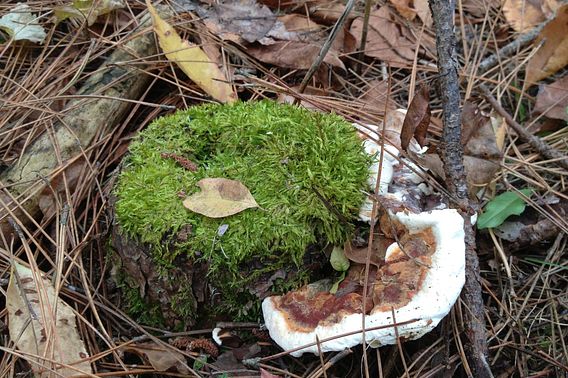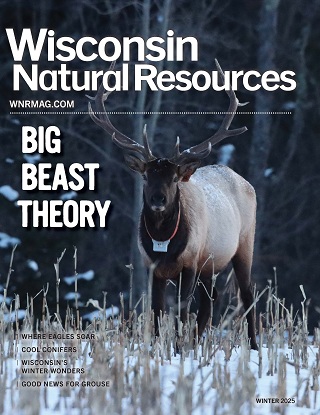Contact: Mike Hillstrom, DNR Forest Health Specialist
michael.hillstrom@wisconsin.gov or 608-513-7690
Check Conifer Trees For Severe Root Disease
 Heterobasidion root disease (HRD) is a severe fungal infection that kills pines, spruces and other conifers in Wisconsin.
Photo credit: Wisconsin DNR
Heterobasidion root disease (HRD) is a severe fungal infection that kills pines, spruces and other conifers in Wisconsin.
Photo credit: Wisconsin DNR
MADISON, Wis. – The Wisconsin Department of Natural Resources (DNR) is asking the public to check needle-bearing trees for signs of a harmful disease and report their findings to the department.
Heterobasidion root disease (HRD) is a severe fungal infection that kills pines, spruces and other conifers in Wisconsin. This fall, watch for new, bright white growths on conifer bases, stumps, seedlings and saplings. To find the fungi, you may need to scrape away needles and other debris. The DNR maintains an online map with all known locations of HRD. Please report suspected cases to your local forest health specialist.
HRD can spread through connected conifer roots below ground and often shows up as clumps of trees that seem to die off one by one. The fungi are most visible on seedlings, saplings and tree stumps. HRD is a rot fungus that decays the wood of the roots and lower stem, so infected trees may have stringy yellow rot that causes the stems to break off.
Preventing HRD is critical because it is challenging to control once it is established in conifer forests. New infections are most common when spores from nearby fungi land on freshly cut stumps, so using preventative fungicides on freshly cut conifer stumps is the best way to protect Wisconsin’s forests from HRD. Fungicides are mixed in water, so application is not possible when temperatures are below freezing.
HRD is not the only health issue impacting pines. Several other insect and disease issues cause similar symptoms, so it’s important to correctly diagnose the cause of pine mortality before deciding on the best management approach.
More information about HRD and other conifer diseases is on the DNR’s Heterobasidion root disease webpage.

